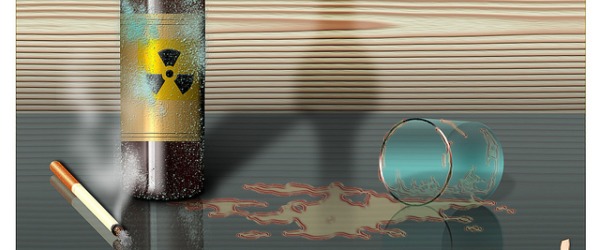One of our readers posted the following question to us and we decided to pass it along to everybody’s favorite microbiology expert, Aunt Yersinia:
For one year I am working in different research laboratories, after I got from school. I keep wondering why EVERYBODY is using pre-made Agar solutions for pouring plates, and EVERYBODY is heating it up the dirty way…
First turn off the lid of the bottle.
Place it in the microwave.
Enjoying this article? Get hard-won lab wisdom like this delivered to your inbox 3x a week.

Join over 65,000 fellow researchers saving time, reducing stress, and seeing their experiments succeed. Unsubscribe anytime.
Next issue goes out tomorrow; don’t miss it.
Set the microwave to 1 minute…
Wait…
Another minute?..
Another?…
KSHHHHHHHHH….
And then the whole bottle of agar medium is found back on the sides and bottom of the microwave, instead of INSIDE the bottle…
Never I have seen a ”protocol” how to heat up this bottle the right way, and EVERY lab has his own Agar solution microwave…
Does someone has a way of heating up these solutions without struggling half an hour of pressing buttons and waiting until the solutions is found back on the walls?
Sparkle
Dear Sparkle,
I feel your pain. Here are tips to avoid the habitual disaster when making agar plates:
1) When you make you agar stock, don’t make full bottles that leave no room for the heated liquid to expand. Fill bottles halfway.
2) Take the lid off the bottle before microwaving; it will prevent pressure build-up inside the bottle and prevent the lid from becoming a projectile inside the microwave.
3) It is safer to use a minimal power setting such as “defrost”. It will take a longer time to melt, but you reduce chances of explosion. Check every 5 minutes until melted.
3) Explosions are caused by uneven heating of the gel in the bottle – while most of it is still solid, the pockets of liquid are superheated. After you see the agar start to boil, carefully take it out and gently mix it – careful, it tends to boil up after agitation.
Optional: after making sure that you have no visible lumps, blast the bottle at the highest setting for 20 seconds to dissolve the crumbs you don’t see.
4) You can use a maximum setting, but keep your hand on the “off” button and press it at the first sign of over-boiling.
5) Some people think that heating agar is an art, not science. I disagree; there is a way to avoid mess applying the scientific principle: the same volume of agar will behave in the same way in the microwave. You only need to find a required time/power setting once and remember it for the rest of your time in the lab.
6) Post these instructions near the microwave.
Good luck and happy pouring!
Aunt Yersinia
You made it to the end—nice work! If you’re the kind of scientist who likes figuring things out without wasting half a day on trial and error, you’ll love our newsletter. Get 3 quick reads a week, packed with hard-won lab wisdom. Join FREE here.







